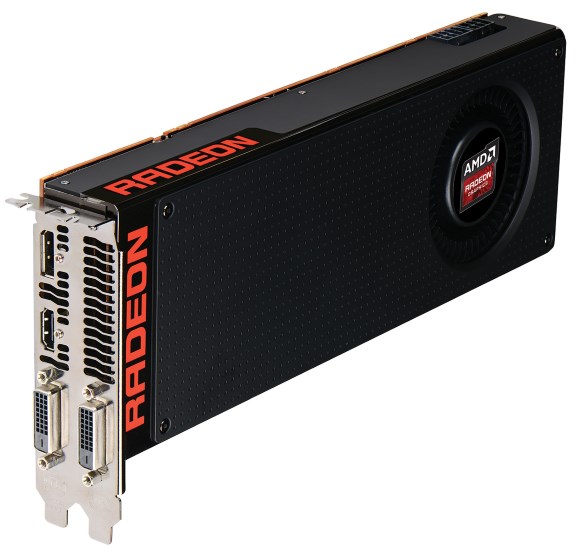
AMD Radeon R9 390 series
First up we have the Grenada-based Radeon R9 390 series, as you may know this chip is based on the 28nm Hawaii from the Radeon R9 290 series. Similar to their predecessors, the R9 390X and R9 390 have 2816 and 2560 stream processors, respectively.
Both models are clocked about 50MHz higher, the R9 390X has a 1050MHz core and the R9 390 is clocked at 1000MHz. Another major difference is that both models now come with 8GB GDDR5, double as much memory as before, and with a frequency of 6000MHz the memory is clocked 1000MHz higher than before. Both models have a 275W TDP.
Pricing is $429 for the R9 390X and $329 for the R9 390.

AMD Radeon R9 380
The Radeon R9 380 features the Antigua GPU, this card is modeled after the Tonga-based Radeon R9 285. The 28nm chip has 1792 stream processors and will be offered in 2GB and 4GB configurations, with pricing of $199 and $249, respectively.
The core clockspeed has been raised from 918MHz to 970MHz and the stock memory speed got a bump from 5500MHz to 5700MHz. The TDP of this card is 190W.
AMD Radeon R7 370 and R7 360
Also out today are the R7 370 and R7 360, these are based on the old GCN 1.0 Pitcairn GPU without DX12 feature level 12_0, TrueAudio, nor FreeSync support. The R7 360 has 768 stream processors and the R7 370 has 1024 stream processors, similar to the R7 260 and R7 265 predecessors.
The $109 R7 360 has a core clockspeed of up to 1050MHz, 2GB GDDR5 memory clocked at up to 6500MHz and a 100W TDP. The R7 370 sells for $149, it has a 110W TDP, up to 975MHz core, and 2/4GB GDDR5 memory clocked at up to 5600MHz.
For details about the performance, check out some reviews from around the web to make up your mind. At first sight the R9 380 and R9 390/390X offer a pretty attractive price/performance ratio versus the competing GeForce cards from NVIDIA but they have a much higher power draw and it seems they have a better relative performance versus the GeForce cards at higher resolutions (4K) than Full HD.